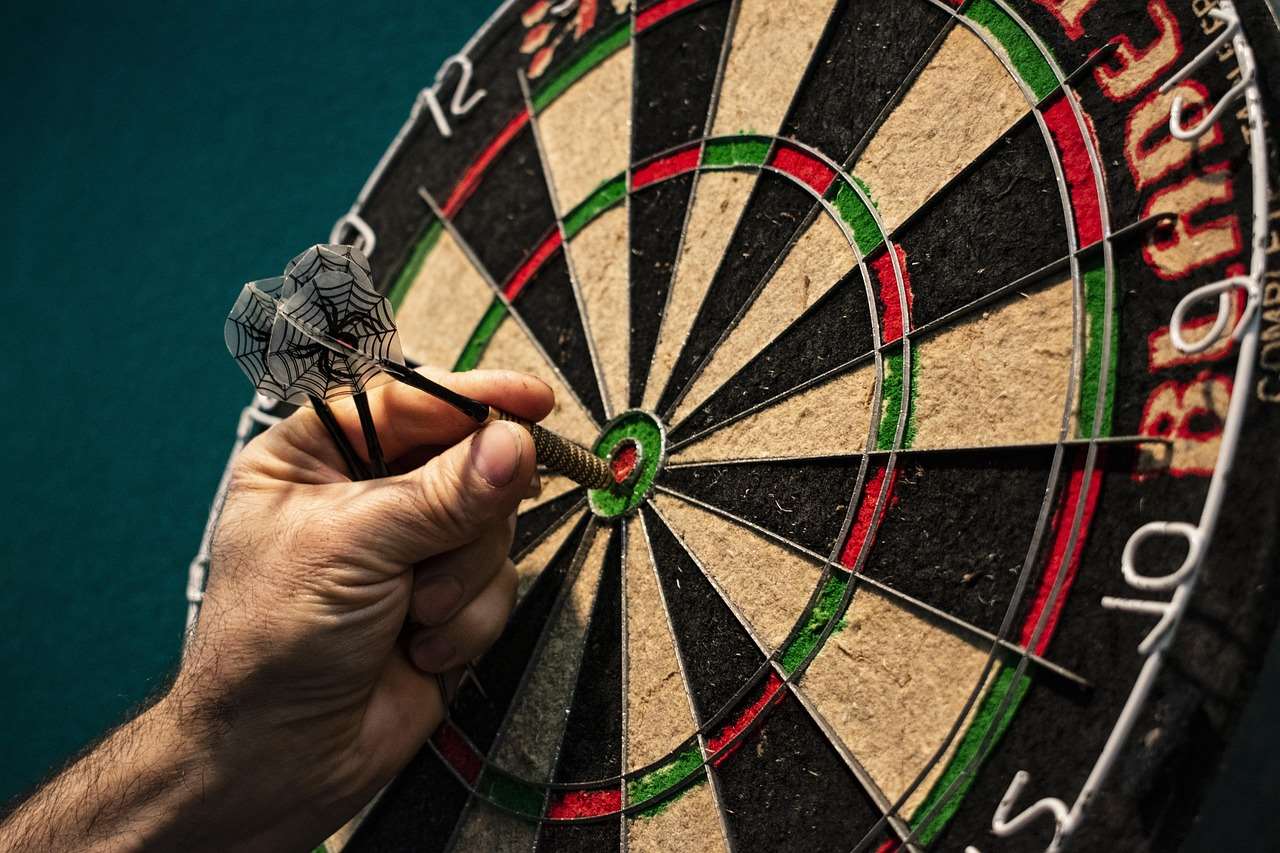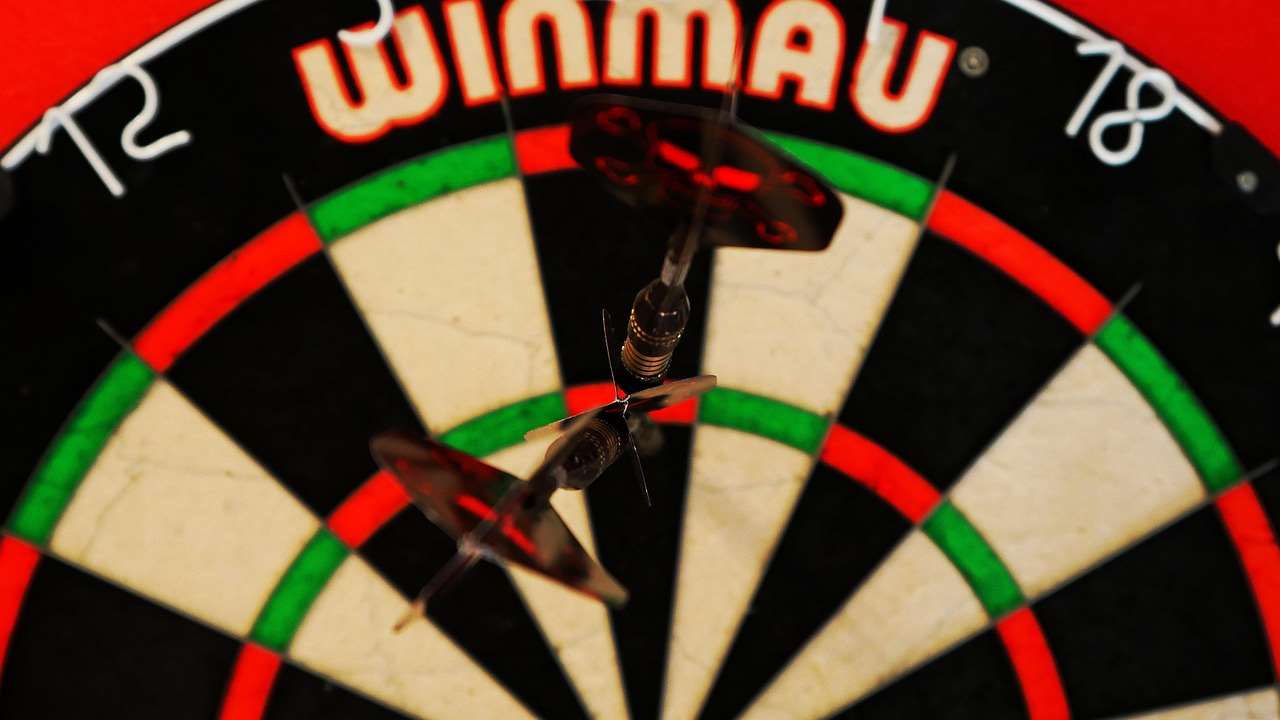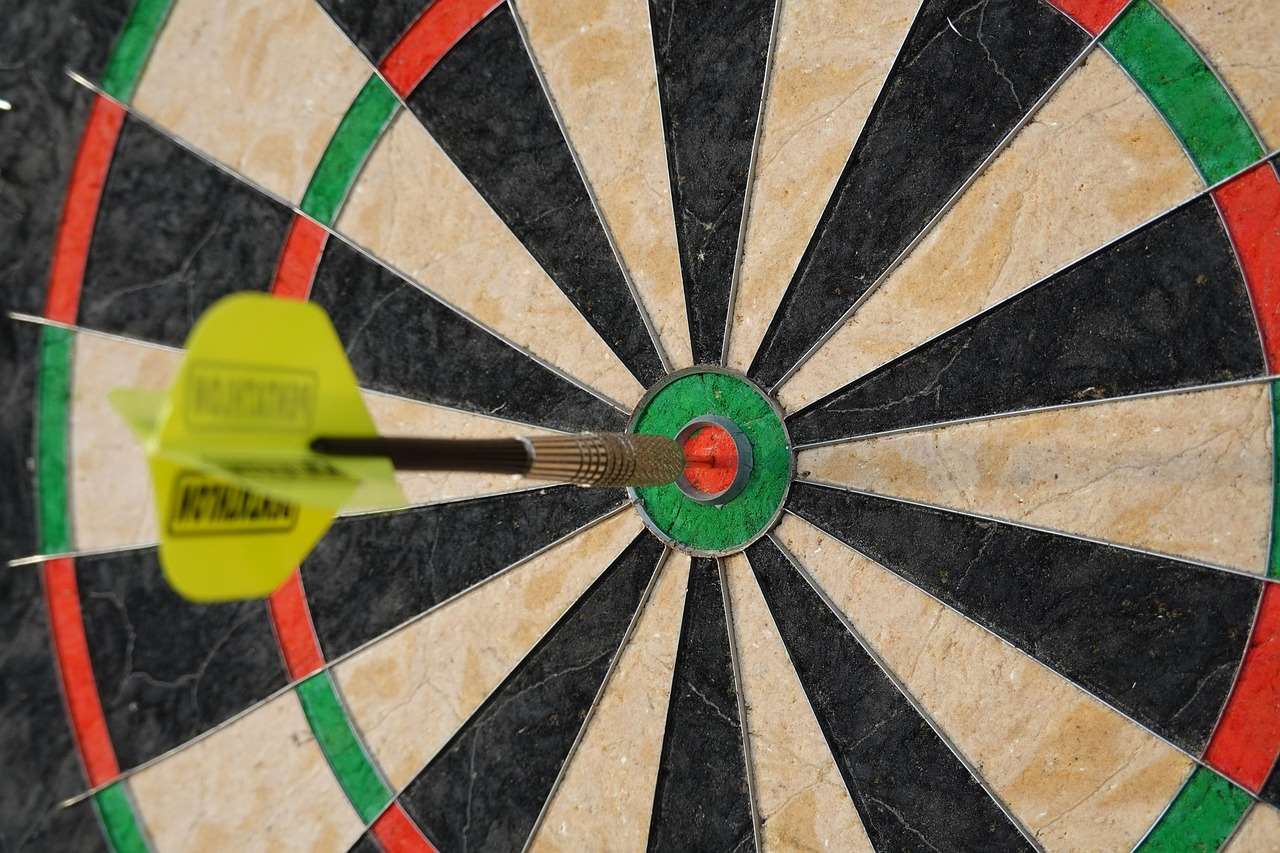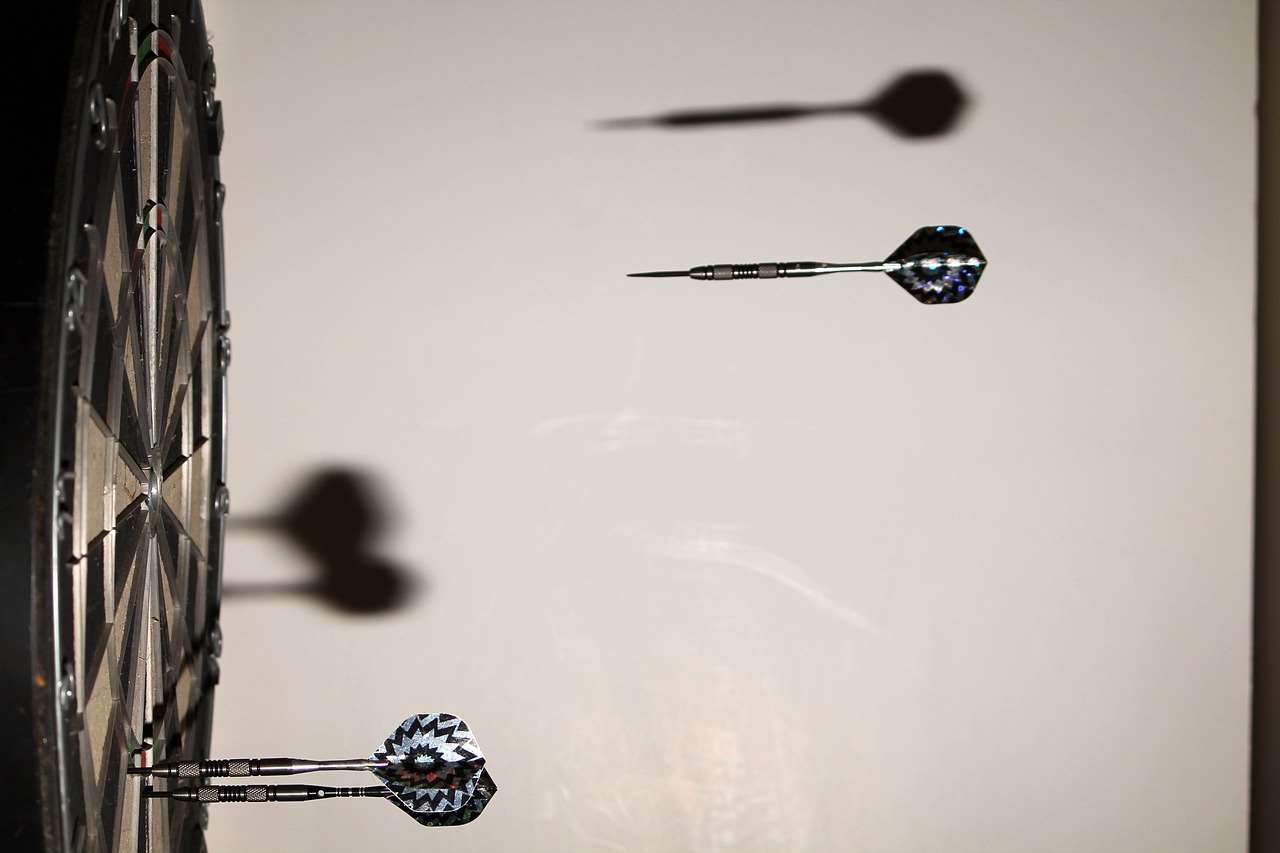The truth about which darts do professionals use is that there’s no single answer, as it’s a highly personal preference dictated by grip, throwing style, and feel; however, most pros favor tungsten darts due to their density and slim profile. This article dives into the specifics of professional darts, examining weights, materials, grip styles, and how to choose the right dart for your game.
⚠️ Still Using Pen & Paper (or a Chalkboard)?! ⚠️
Step into the future! The Dart Counter App handles all the scoring, suggests checkouts, and tracks your stats automatically. It's easier than you think!
Try the Smart Dart Counter App FREE!Ready for an upgrade? Click above!
Decoding Professional Dart Choices: What Matters Most?
Understanding which darts do professionals use requires considering several key factors. It’s not just about brand or price; it’s about how a dart complements a player’s individual technique. The primary elements to consider are weight, material, grip, and flight shape. While imitation might seem appealing, remember that the best dart for you is the one that feels most comfortable and consistently delivers results for your throw.
Many players beginning their darts journey wonder whether to use steel tip darts or soft tip darts. These are the two main types of darts, with each having their own style of play. The answer to this is dependent on the kind of darts board you will be playing on.

Weight: Finding Your Ideal Balance
Dart weight is arguably the most crucial factor. Professional darts typically range from 20 to 26 grams, with most players settling somewhere in between. Lighter darts (20-23g) often suit players with a faster, more wrist-driven throw, while heavier darts (24-26g) can be beneficial for those with a slower, more deliberate action. Experimenting with different weights is key to discovering what feels most natural. Note that the weight is often marked clearly on the barrel of the dart.
Professional players understand that the weight distribution within the dart also plays a role. A front-weighted dart tends to fly straighter and penetrate the board more easily, while a rear-weighted dart can provide more control for some players. Ultimately, finding the right weight distribution is about personal preference.
Material: Why Tungsten Reigns Supreme
While brass and nickel-silver darts are available (especially for beginners), most professionals use tungsten darts. Tungsten is significantly denser than these other materials, allowing manufacturers to create slimmer barrels with the same weight. This slim profile allows for tighter groupings on the dartboard, reducing deflections and maximizing scoring potential. The higher the tungsten percentage (typically ranging from 80% to 97%), the slimmer the barrel. Understanding the composition of your dart can help with better aim darts.
While more expensive, tungsten darts offer superior durability and performance compared to their cheaper counterparts. The investment is usually worthwhile for serious players looking to improve their game.
Grip: Finding Your Tactile Connection
The grip of a dart refers to the texture and pattern on the barrel that provides purchase for the fingers. Grips vary widely, from smooth barrels with minimal texture to aggressive knurled or ringed grips. Some players prefer a very tactile grip, while others prefer a smoother feel. The ideal grip depends on individual preferences and how much control a player wants over the dart. Some grips will assist with getting the dart entry point spot on.
Common grip styles include:
- Knurled: A rough, diamond-patterned texture offering a very secure grip.
- Ringed: A series of concentric rings providing varying levels of grip depending on their depth and spacing.
- Scalloped: Indentations in the barrel providing a consistent and comfortable grip point.
- Smooth: Minimal texture, offering a very subtle grip.
Examples of Professional Dart Setups
While individual preferences vary, here are a few examples of popular dart setups among professional players to give you an idea of the range:
- Michael van Gerwen: Typically uses 23g tungsten darts with a ringed grip.
- Peter Wright: Is known for using uniquely painted darts of varying weights, mostly around 21g.
- Gerwyn Price: Uses 22g tungsten darts with a combination of ringed and knurled grip sections.

These are just examples, and many other professionals use different setups. The key is to find what works best for you through experimentation and practice. Remember that observing professional players can offer inspiration and ideas for your own game. And when they win, they often have a darts leg win song to celebrate.
Flights and Stems: Completing the Package
While the barrel is the primary component, flights and stems also play a crucial role in dart flight and stability. Flights come in various shapes and sizes, each affecting aerodynamics differently. Larger flights provide more stability but can slow the dart down, while smaller flights offer less drag but require a more consistent throw. Standard, kite, and slim flights are common choices. The are many reasons for why flights die draaien.
Stems connect the flight to the barrel and come in different lengths and materials. Longer stems increase stability, while shorter stems can improve grouping. Common materials include nylon, aluminum, and carbon fiber. Experimenting with different flight and stem combinations can fine-tune your dart’s trajectory and improve accuracy.
Using a Digital dart score app can also help track these tweaks to find the best arrangement.
Choosing the Right Flights
The correct flight choice depends on your throwing style and dart weight. A general guideline is to use:
- Standard Flights: Good for heavier darts and players with a slower throw. Provide maximum stability.
- Kite Flights: A good all-around choice, offering a balance of stability and speed.
- Slim Flights: Best for lighter darts and players with a faster throw. Minimize drag.

Stem Length and Material
Stem length affects the dart’s angle of entry into the board. Longer stems create a steeper angle, while shorter stems result in a flatter trajectory. Nylon stems are durable and inexpensive, while aluminum stems are more rigid and can improve accuracy. Carbon fiber stems are lightweight and offer excellent strength but are more expensive.
Adapting Your Darts to Your Style
Understanding which darts do professionals use is a starting point, but the real journey lies in adapting your darts to your unique throwing style. Consider these factors when making your selection:
- Grip Style: Do you prefer a firm, tactile grip or a smoother feel?
- Throwing Motion: Do you have a fast, wrist-driven throw or a slower, more deliberate action?
- Dart Trajectory: Do you prefer a high arc or a flatter trajectory?
By considering these factors, you can narrow down your choices and select darts that complement your natural technique. It’s an ongoing process of experimentation and refinement, so don’t be afraid to try different setups until you find what works best.
Trying Before You Buy: Finding the Right Fit
Whenever possible, try out different darts before making a purchase. Many darts shops have practice boards where you can test various weights, grips, and flight combinations. This hands-on experience is invaluable in finding darts that feel comfortable and perform well for you. Consider visiting dart tourism count up competitions and speaking to vendors there.
If you can’t try darts in person, consider purchasing a sample pack with a variety of weights and grip styles. This will allow you to experiment at home and narrow down your preferences. Keep detailed notes on your results with each setup to track your progress and identify what works best.

The Psychology of Darts: Confidence in Your Equipment
Beyond the technical aspects, the psychology of darts plays a significant role in performance. Having confidence in your equipment can boost your mental game and improve your consistency. Once you’ve found a dart setup that feels comfortable and produces consistent results, stick with it. Avoid constantly changing your equipment, as this can lead to doubt and inconsistency.
Professional players often develop a strong connection with their darts, treating them as an extension of their own bodies. This level of familiarity and confidence can translate into improved performance on the oche.
Make sure to maintain your darts as well. Always darts stay in the board better when maintained.
Upgrading Your Darts: When and Why?
While sticking with a proven setup is important, there may be times when upgrading your darts is beneficial. Consider upgrading if:
- Your skills have improved: As your throwing technique evolves, you may find that your current darts no longer suit your style.
- Your darts are damaged: If your darts are bent, chipped, or otherwise damaged, it may be time for a replacement.
- You’re experimenting with new techniques: If you’re trying to refine your throwing motion, new darts may help you achieve your goals.
When upgrading, focus on making incremental changes rather than drastic overhauls. This will allow you to adapt to the new equipment more easily and avoid disrupting your consistency. This will also help to avoid getting a darts forfeit.

Conclusion: Finding Your Perfect Darting Match
In summary, understanding which darts do professionals use involves considering weight, material, grip, flights, and stems, but the “best” darts are ultimately the ones that feel most comfortable and consistent for your unique throwing style. Most professionals opt for tungsten darts in the 20-26 gram range, but experimentation is key. Don’t be afraid to try different setups and adapt your equipment to your evolving technique. Confidence in your equipment is just as important as the technical aspects. Find your perfect darting match and watch your game soar. Now, take the knowledge you’ve gained and head to your local dart shop, try some different sets, and start honing your skills. Practice makes perfect, and the right darts can make all the difference. Consider purchasing some bulls eye dart products to help.
Hi, I’m Dieter, and I created Dartcounter (Dartcounterapp.com). My motivation wasn’t being a darts expert – quite the opposite! When I first started playing, I loved the game but found keeping accurate scores and tracking stats difficult and distracting.
I figured I couldn’t be the only one struggling with this. So, I decided to build a solution: an easy-to-use application that everyone, no matter their experience level, could use to manage scoring effortlessly.
My goal for Dartcounter was simple: let the app handle the numbers – the scoring, the averages, the stats, even checkout suggestions – so players could focus purely on their throw and enjoying the game. It began as a way to solve my own beginner’s problem, and I’m thrilled it has grown into a helpful tool for the wider darts community.